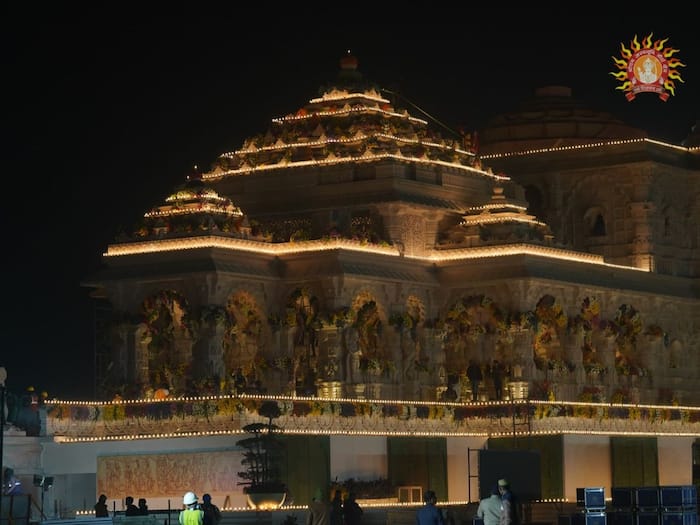
[ad_1]
According to experts, the entire structure of the Ayodhya Ram Mandir is so well-made and strong that it can survive the biggest earthquake, the one that occurs once in 2500 years.

New Delhi: Ever since the Ayodhya Ram Mandir in the temple city of Ayodhya, Uttar Pradesh opened for the general public on Janaury 23, 2024 devotees have been thronging the divine place in lakhs. The security and other administrative arrangements have been remarkable as the huge crowd is being handled well every day. Did you know that the entire structure of the Ayodhya Ram Mandir has been made using the Bansi Paharpur sandstone, without any steel reinforcement and it is designed for a lifespan of one thousand years according to a scientist. In a latest news development, according to scientific studies conducted of the temple, the structure can survive the biggest earthquake that appears once in 2,500 years.
Ayodhya Ram Mandir Designed To Stand Biggest Earthquake
As mentioned earlier, Ayodhya Ram Mandir is designed to withstand the biggest earthquake that occurs once in 2,500 years. The CSIR-Central Building Research Institute (CSIR-CBRI) – Roorkee conducted a series of scientific studies of the Ayodhya site, including geophysical characterisation, geotechnical analysis, foundation design vetting, and 3D structural analysis and design.
CSIR-CBRI Conducts Scientific Study
“The scientific study was done to ensure the structural safety of the temple for the Maximum Considered Earthquake, equivalent to a 2,500-year return period,” Debdutta Ghosh, a senior scientist at CSIR-CBRI, told the news agency PTI. Ghosh and Manojit Samanta, coordinators of the Centre of Excellence for Conservation of Heritage Structures at CSIR-CBRI — led the teams in reviewing the foundation design and monitoring, conducting 3D structural analysis and design of the Ram mandir.
The pair was guided by CSIR-CBRI Director Pradeep Kumar Ramancharla and his predecessor N Gopalakrishnan. Ghosh said the geophysical characterisation process involved a Multi-Channel Analysis of Surface Waves (MASW) to estimate primary wave velocity, along with electrical resistance tomography to identify anomalies, water saturation zones and water tables. These findings served as crucial inputs for a site-specific response for underground investigations and estimation of seismic design parameters, he said.
Soil Investigation And Excavation Schemes Vetted By CSIR-CBRI
Apart from conducting a scientific study to check the safety of the structure, the CSIR-CBRI also vetted soil investigation schemes, foundation design parameters, excavation schemes and recommendations for foundation and structure monitoring. Ghosh said the structural design was recommended after simulating more than 50 computer models and analysing those under different loading conditions for its optimal performance, architectural appeal and safety.
The entire superstructure has been constructed using Bansi Paharpur sandstone, embodying a dry jointed structure with no steel reinforcement, designed for a lifespan of 1,000 years, he said. The superstructure material — Bansi Paharpur sandstone — has been tested at the Centre to evaluate the engineering properties that was used as input for structural analysis. Specialised brick with compressive strength of more than 20 MPa (mega pascals), or approximately 2,900 pounds per square inch (psi), at 28 days of curing under standard conditions, has been used in the structures, Ghosh said.
The Ayodhya Ram Mandir, abode of Ram Lalla was opened for the general public on Jan 23 after the grand Ram Mandir Pran Pratishtha on January 22. The Consecration Ceremony was attended by the who’s who of the political, business, sports and entertainment world of India. The Pran Pratishtha rituals were performed by Prime Minister Narendra Modi, with Uttar Pradesh CM Yogi Adityanath in attendance.
(Inputs from PTI)
[ad_2]